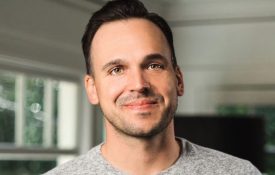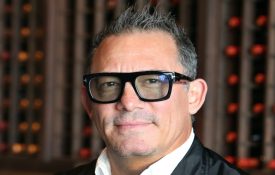What are your biggest business concerns surrounding COVID-19?
The biggest concern is expectation management and misinformation, [which is why I started CoronaComments.com]. There is still so much we don’t understand about COVID-19, which is when the environment is ripe for false truths. For example, [since mid-April] there has been a lot of focus on antibody testing and the potential that we can find out if people have become immune to the virus based on the fact that they have antibodies. There are two immediate challenges here:
- We don’t know that having antibodies means you actually are immune from getting the virus again—we think so, and hope so, but we don’t know. More complicated in fact, is the idea that immune responses are actually not black and white, but more like shades of grey, meaning that you may have a particular level of antibodies, and we don’t know if that level is enough to confer immunity.
- Not all antibody tests are created equal, meaning that depending on how they are calibrated and deployed, they may turn out different results. Because the FDA is not vetting all tests, there are a lot of tests out there that may turn out significant false positive or false negative results. That means people will think they have had an immune response when they have not (false positive). In other words, don’t just order a test from the internet or even your local provider without knowing its parameters (something called sensitivity and specificity) and what the results are actually going to mean. The misinformation out there right now is that the antibody test is the golden ticket to reopening, but without really knowing what the test results mean and what type of immune response is needed, a simple answer from testing just is not possible. By not being able to have all the answers because science is continuously changing, it is tough to make actionable recommendations to the public. The best we can do is communicate what the science is actually showing and how results should be interpreted. For example, playing out the antibody issue, we get it if you want an antibody test to have peace of mind or start back to work, but the reality is the test results you would be getting right now wouldn’t be something I would have much confidence in, so I would say, pay attention to who has vetted the test (a federal agency? A medical provider?) and what the results are meant to show (your provider should be able to tell you that the test has a certain chance of being right, called the sensitivity). Without this information, you should be skeptical. This means that it is really difficult to have a plan for reopening the economy and that inability to set reasonable expectations is leading to some really illogical decisions. There is a delicate balance between protecting people’s health, and creating a culture of health, and getting businesses reopened, and not everyone sees that balance the same way.
What is your current business strategy for dealing with the situation?
I am in the business of trying to explore the issues surrounding COVID-19 and what to tell people about these issues, so things are changing at lightning speed. It is most important to not create a void of information, because this then becomes a conspiracy theorists dream. It is the role of scientists and risk communicators to explain what we know and what we don’t and to continuously update that. Think critically about any numbers you see. For example, we know something like the cumulative case count (the number of total cases that are happening), but we don’t know who is missing from the count. Daily counts are better interpreted as rates, meaning the number of new cases or total cases divided by the number of tests that are done. Because think about it, more tests will mean more cases.
So, it’s important to think back to our basic mathematical education and not take any number at face value. Trend data can be more valuable, but again trends can change because behavior changed; so, for example, it is good when new hospitalizations due to COVID-19 decrease, but this may also correspond with more people staying home because they cannot be hospitalized because hospital beds are full. So, we would want to look at multiple numbers and trends together, in the context of testing and healthcare capacity. The key is to think critically because a number has whole story behind it. That is why I am writing daily, translating the plethora of news out there into bite size chunks for my network, that make the science digestible to a lay audience. My strategy is to be clear, concise, consistent and transparent.
There is a delicate balance between protecting people’s health, and creating a culture of health, and getting businesses reopened, and not everyone sees that balance the same way.
How do you think things will look in your industry a year from now?
It is an interesting time to think about the field of public health and risk communication. In some ways this is the public health super bowl. What were previously technical terms like “flatten the curve” or “serologic survey” are becoming colloquialisms. That is fantastic, in the sense there is enthusiasm and interest for the field, and a need for fresh, young minds to think about these issues. It also means there may be misconceptions about these terms and the approaches that are feasible and appropriate.
People should be prepared for an influx of interest in the field, fatigue in being asked to toe the line and stay home, socially distance, or change business practices, and the need for innovative ways to make information meaningful and actionable when that fatigue sets in. In a year if we see a resurgence of the virus, which is likely to ebb and flow until there is a vaccine, disinterest may set in. There have to be strategies to make changing behavior easier—things like apps or geo-locators to remind you to wash your hands, put on a mask, stand six feet away, or travel with caution. We have to work to make things easier for the public so information and the word of people behind a podium are not the only thing folks are expected to rely upon.
What have you learned from other difficult times in the past?
There are often “diseases du jour” so to speak. There was Ebola, Zika, and now COVID-19. Globally COVID-19 has certainly seen the most cases and the largest effect, but the idea is that there are a lot of past experiences to learn from in terms of how to mount an effective public health response and communicate with the public. Having a trusted communicator, and a coordinated response are key. Mistakes have been made, but there is still opportunity to do better.
Personally, I have learned that it is most important to be able to respond to questions and be willing to say when the information isn’t there and follow up when it is. Coronavirus has gained a strong foothold here because it is easily transmitted from person to person and on surfaces, in contrast to something like Zika, which was transmitted only by a vector, a mosquito. We should be thankful that COVID-19 is not transmitted as easily as something like measles. We were slow to identify COVID-19 was already in the United States when resources were instead being diverted to border screening. Pandemics are global issues and are best addressed when the assumption is that we are a global community and will all face similar issues.

CoronaComments.com Founder Rachael Piltch-Loeb.
Safe–and entertained–at Home: What business leaders are doing with their downtime
Morning routine?
My day starts with a review of the news from publications that have great morning briefs: New York Times, Axios, Stat News.
Currently binging and reading?
I have a two-month-old, so there is limited time for any other forms of entertainment.
What are you doing to spend quality time with those you’re sheltering with?
Attempting to learn to cook. Currently it’s been a so-so effort all around.
What are you doing to stay healthy mentally and physically?
There is a walking path that I still try and get to a few times a week. Fresh air keeps me sane and is a necessity.
Where are you dreaming of visiting once things are back to normal?
I most miss the destinations that are familiar. New York is currently home—I can’t wait to have duck at my favorite Chinese restaurant, and a trip to London to walk on the high pub and have Indian food is calling my name.












































